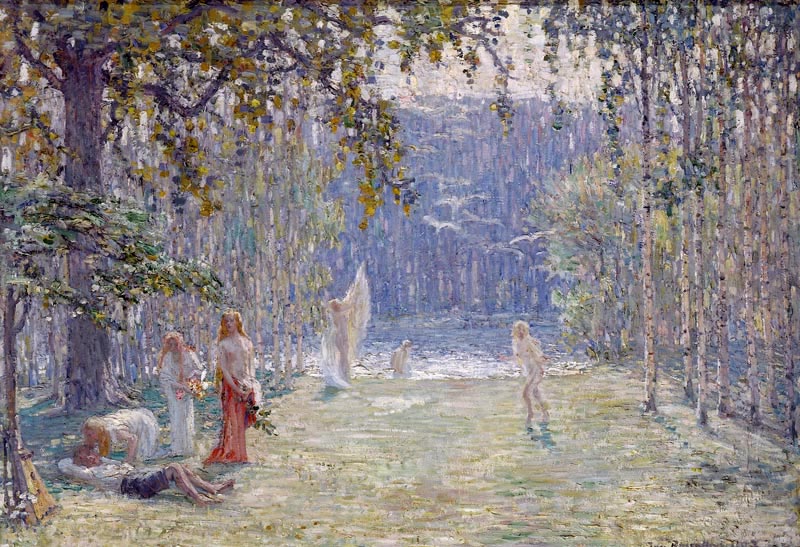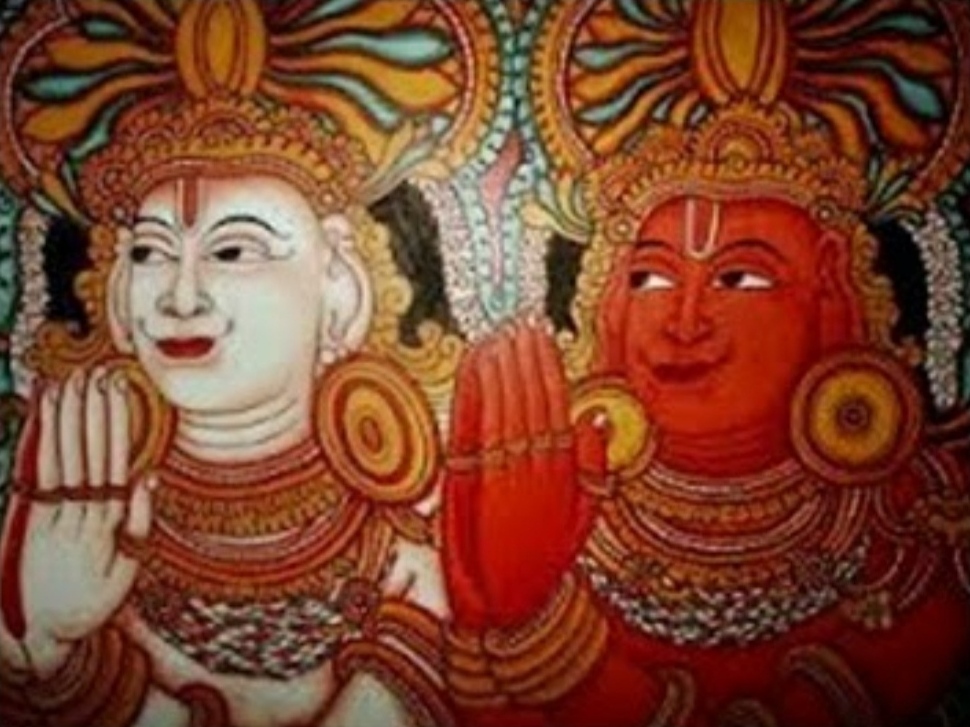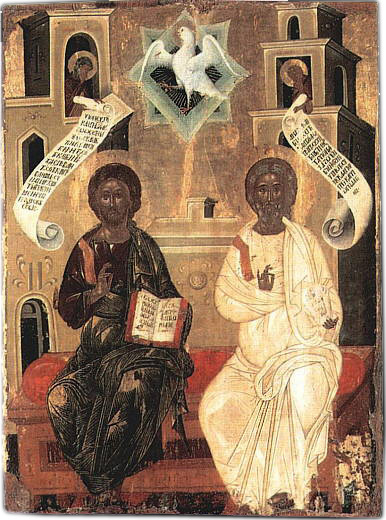|
Dievas
Lithuanian Dievas, Latvian Dievs, Latgalian Dīvs, Old Prussian Dìews, Yotvingian Deivas was the primordial supreme god in the Baltic mythology and one of the most important deities together with Perkūnas and he was brother of Potrimpo. He was the god of sky, prosperity, wealth, ruler of gods, and creator of universe. Dievas is a direct successor of the Proto-Indo-European supreme sky father god *Dyēus of the root ''*deiwo-''. Its Proto-Baltic form was *''Deivas''. Dievas had two sons Dievo sūneliai (Lithuanian) or Dieva dēli (Latvian) known as the Heavenly Twins. In recent Lithuanian and Latvian, this word may refer to the deity of any kind (Pagan, Christian, fictional and the like). In English, Dievas may be used as a word to describe the God (or, the supreme god) in the pre-Christian religion of Balts, where Dievas was understood to be the supreme being of the world. In Lithuanian and Latvian, it is also used to describe God as it is understood by major world re ... [...More Info...] [...Related Items...] OR: [Wikipedia] [Google] [Baidu] |
Lithuanian Mythology
Lithuanian mythology ( lt, Lietuvių mitologija) is the mythology of Lithuanian polytheism, the religion of pre-Christian Lithuanians. Like other Indo-Europeans, ancient Lithuanians maintained a polytheistic mythology and religious structure. In pre-Christian Lithuania, mythology was a part of polytheistic religion; after Christianisation mythology survived mostly in folklore, customs and festive rituals. Lithuanian mythology is very close to the mythology of other Baltic nations – Prussians, Latvians, and is considered a part of Baltic mythology. Sources and evidence Early Lithuanian religion and customs were based on oral tradition. Therefore, the very first records about Lithuanian mythology and beliefs were made by travellers, Christian missionaries, chronicle writers and historians. Original Lithuanian oral tradition partially survived in national ritual and festive songs and legends which started to be written down in the 18th century. The first bits about Baltic ... [...More Info...] [...Related Items...] OR: [Wikipedia] [Google] [Baidu] |
Perkūnas
Perkūnas ( lt, Perkūnas, lv, Pērkons, Old Prussian: ''Perkūns'', ''Perkunos'', Yotvingian: ''Parkuns'', Latgalian: ''Pārkiuņs'') was the common Baltic god of thunder, and the second most important deity in the Baltic pantheon after Dievas. In both Lithuanian and Latvian mythology, he is documented as the god of sky, thunder, lightning, storms, rain, fire, war, law, order, fertility, mountains, and oak trees. Etymology The name continues PIE ''*'', cognate to ''*'', a word for "oak", " fir" or "wooded mountain". The Proto-Baltic name *''Perkūnas'' can be reconstructed with certainty. Slavic Perun is a related god, but not an etymologically precise match. Finnish Perkele, a name of Ukko, is considered a loan from Baltic. Another connection is that of ''terpikeraunos'', an epithet of Zeus meaning "''who enjoys lightning''". Perkūnas in written sources Most information about Perkūnas comes from folklore songs, legends, and fairy tales. Because most of them were c ... [...More Info...] [...Related Items...] OR: [Wikipedia] [Google] [Baidu] |
Saulė
Saulė ( lt, Saulė, lv, Saule) is a solar goddess, the common Baltic solar deity in the Lithuanian and Latvian mythologies. The noun ''Saulė''/''Saule'' in the Lithuanian and Latvian languages is also the conventional name for the Sun and originates from the Proto-Baltic name *''Sauliā'' > *''Saulē''. Representation Saulė is one of the most powerful deities, the goddess of the sun itself, responsible for all life on Earth. She is the patroness of the unfortunate, especially orphans. The Lithuanian and Latvian words for "the world" (''pasaulis'' and ''pasaule'') are translated as " placeunder the Sun". Saulė is mentioned in one of the earliest written sources on Lithuanian mythology. According to the Slavic translation of the Chronicle by John Malalas (1261), a smith named Teliavelis made the Sun and threw it into the sky. Missionary Jerome of Prague (ca. 1369–1440) spent three years attempting to Christianize Lithuania and later recounted a myth about the kidnapped S ... [...More Info...] [...Related Items...] OR: [Wikipedia] [Google] [Baidu] |
Divine Twins
The Divine Twins are youthful horsemen, either gods or demigods, who serve as rescuers and healers in Proto-Indo-European mythology. Like other Proto-Indo-European divinities, the Divine Twins are not directly attested by archaeological or written materials, but scholars of comparative mythology and Indo-European studies generally agree on the motifs they have reconstructed by way of the comparative method. Common traits Scholar Donald Ward proposed a set of common traits that pertain to divine twin pairs of Indo-European mythologies: * dual paternity; * mention of a female figure (their mother or their sister); * deities of fertility; * known by a single dual name or having rhymed/alliterative names; * associated with horses; * saviours at sea; * of astral nature; * protectors of oaths; * providers of divine aid in battle; and * magic healers. Name Although the Proto-Indo-European (PIE) name of the Divine Twins cannot be reconstructed with certainty based on the available lin ... [...More Info...] [...Related Items...] OR: [Wikipedia] [Google] [Baidu] |
Deva (Hinduism)
''Deva'' (; Sanskrit: , ) means "shiny", "exalted", "heavenly being", "divine being", "anything of excellence", and is also one of the Sanskrit terms used to indicate a deity in Hinduism.Monier Monier-Williams, A Sanskrit-English Dictionary” Etymologically and Philologically Arranged to cognate Indo-European Languages, Motilal Banarsidass, page 492 ''Deva'' is a masculine term; the feminine equivalent is '' Devi''. In the earliest Vedic literature, all supernatural beings are called ''Devas''George Williams (2008), A Handbook of Hindu Mythology, Oxford University Press, , pages 90, 112 and ''Asuras''. The concepts and legends evolved in ancient Indian literature, and by the late Vedic period, benevolent supernatural beings are referred to as ''Deva-Asuras''. In post-Vedic Hindu texts, such as the Puranas and the Itihasas of Hinduism, the ''Devas'' represent the good, and the ''Asuras'' the bad. In some medieval works of Indian literature, ''Devas'' are also referred to ... [...More Info...] [...Related Items...] OR: [Wikipedia] [Google] [Baidu] |
Baltic Mythology
Baltic mythology is the body of mythology of the Baltic people stemming from Baltic paganism and continuing after Christianization and into Baltic folklore. Baltic mythology ultimately stems from Proto-Indo-European mythology. The Baltic region was one of the last regions of Europe to be Christianized, a process that began in the 15th century and continued for at least a century afterward. While no native texts survive detailing the mythology of the Baltic peoples during the pagan period, knowledge of such beliefs may be gained from Russian and German chronicles, from later folklore, from etymology and from the reconstructions of comparative mythology.Puhvel (1989:222-229). While the early chronicles (14th and 15th century) were largely the product of missionaries who sought to eradicate the native paganism of the Baltic peoples, rich material survives into Baltic folklore. This material has been of particular value in Indo-European studies as, like the Baltic languages, it is co ... [...More Info...] [...Related Items...] OR: [Wikipedia] [Google] [Baidu] |
Pantheism
Pantheism is the belief that reality, the universe and the cosmos are identical with divinity and a supreme supernatural being or entity, pointing to the universe as being an immanent creator deity still expanding and creating, which has existed since the beginning of time, or that all things compose an all-encompassing, immanent god or goddess and regards the universe as a manifestation of a deity. This includes all astronomical objects being viewed as part of a sole deity. The worship of all gods of every religion is another definition but is more precisely termed Omnism. Pantheist belief does not recognize a distinct personal god, anthropomorphic or otherwise, but instead characterizes a broad range of doctrines differing in forms of relationships between reality and divinity. Pantheistic concepts date back thousands of years, and pantheistic elements have been identified in various religious traditions. The term ''pantheism'' was coined by mathematician Joseph Raphson ... [...More Info...] [...Related Items...] OR: [Wikipedia] [Google] [Baidu] |
Hinduism
Hinduism () is an Indian religion or '' dharma'', a religious and universal order or way of life by which followers abide. As a religion, it is the world's third-largest, with over 1.2–1.35 billion followers, or 15–16% of the global population, known as Hindus. The word ''Hindu'' is an exonym, and while Hinduism has been called the oldest religion in the world, many practitioners refer to their religion as '' Sanātana Dharma'' ( sa, सनातन धर्म, lit='the Eternal Dharma'), a modern usage, which refers to the idea that its origins lie beyond human history, as revealed in the Hindu texts. Another endonym is ''Vaidika dharma'', the dharma related to the Vedas. Hinduism is a diverse system of thought marked by a range of philosophies and shared concepts, rituals, cosmological systems, pilgrimage sites, and shared textual sources that discuss theology, metaphysics, mythology, Vedic yajna, yoga, agamic rituals, and temple building, among other to ... [...More Info...] [...Related Items...] OR: [Wikipedia] [Google] [Baidu] |
Proto-Indo-European Language
Proto-Indo-European (PIE) is the reconstructed common ancestor of the Indo-European language family. Its proposed features have been derived by linguistic reconstruction from documented Indo-European languages. No direct record of Proto-Indo-European exists. Far more work has gone into reconstructing PIE than any other proto-language, and it is the best understood of all proto-languages of its age. The majority of linguistic work during the 19th century was devoted to the reconstruction of PIE or its daughter languages, and many of the modern techniques of linguistic reconstruction (such as the comparative method) were developed as a result. PIE is hypothesized to have been spoken as a single language from 4500 BC to 2500 BC during the Late Neolithic to Early Bronze Age, though estimates vary by more than a thousand years. According to the prevailing Kurgan hypothesis, the original homeland of the Proto-Indo-Europeans may have been in the Pontic–Caspian steppe of ... [...More Info...] [...Related Items...] OR: [Wikipedia] [Google] [Baidu] |
Manifestation , the manifestation of a deity in an observable way
{{d ...
Manifestation is the act of becoming manifest, to become perceptible to the senses. Manifestation may also refer to: * Manifestation of conscience, a practice in religious orders * Manifestation of God (Baháʼí Faith), the prophets of the Bahá'í Faith * Materialization (paranormal), also called manifestation, the creation or appearance of matter from unknown sources *Manifestation (popular psychology), various pseudoscientific self-help strategies * ''Manifestation'' (Malevolent Creation album), 2000 * ''Manifestation'' (Cloak of Altering album), 2015 * ''The Manifestation'', a 2004 album by Six Organs of Admittance See also * Epiphany (other) * Theophany Theophany (from Ancient Greek , meaning "appearance of a deity") is a personal encounter with a deity, that is an event where the manifestation of a deity occurs in an observable way. Specifically, it "refers to the temporal and spatial manifest ... [...More Info...] [...Related Items...] OR: [Wikipedia] [Google] [Baidu] |
Hypostasis (religion)
Hypostasis (Greek: ὑπόστασις, ''hypóstasis'') is the underlying state or underlying substance and is the fundamental reality that supports all else. In Neoplatonism the hypostasis of the soul, the intellect (''nous'') and "the one" was addressed by Plotinus. In Christian theology, the Holy Trinity consists of three hypostases: Hypostasis of the Father, Hypostasis of the Son, and Hypostasis of the Holy Spirit. Ancient Greek philosophy Pseudo-Aristotle used hypostasis in the sense of material substance. Neoplatonists argue that beneath the surface phenomena that present themselves to our senses are three higher spiritual principles, or hypostases, each one more sublime than the preceding. For Plotinus, these are the Soul, the Intellect, and the One.''Neoplatonism (Ancient Philosophies)'' by Pauliina Remes (2008), University of California Press , pp. 48–52. Christian theology The term hypostasis has a particular significance in Christian theology, particularly in Ch ... [...More Info...] [...Related Items...] OR: [Wikipedia] [Google] [Baidu] |
Funk & Wagnalls
Funk & Wagnalls was an American publisher known for its reference works, including ''A Standard Dictionary of the English Language'' (1st ed. 1893–5), and the ''Funk & Wagnalls Standard Encyclopedia'' (25 volumes, 1st ed. 1912).Funk & Wagnalls New Encyclopedia, 1996 The encyclopedia was renamed ''Funk & Wagnalls New Standard Encyclopedia'' in 1931 and in 1945, it was known as ''New Funk & Wagnalls Encyclopedia'', ''Universal Standard Encyclopedia'', ''Funk & Wagnalls Standard Reference Encyclopedia'', and ''Funk & Wagnalls New Encyclopedia'' (29 volumes, 1st ed. 1971). The last printing of ''Funk & Wagnalls New Encyclopedia'' was in 1997. , annual Yearbooks are still in production. The I.K. Funk & Company, founded in 1875, was renamed Funk & Wagnalls Company after two years, and later became Funk & Wagnalls Inc., then Funk & Wagnalls Corporation. History Isaac Kaufmann Funk founded the business in 1875 as I.K. Funk & Company. In 1877, Adam Willis Wagnalls, one of Funk's class ... [...More Info...] [...Related Items...] OR: [Wikipedia] [Google] [Baidu] |

_-_1909.jpg)


.jpg)
.jpg)



.jpg)